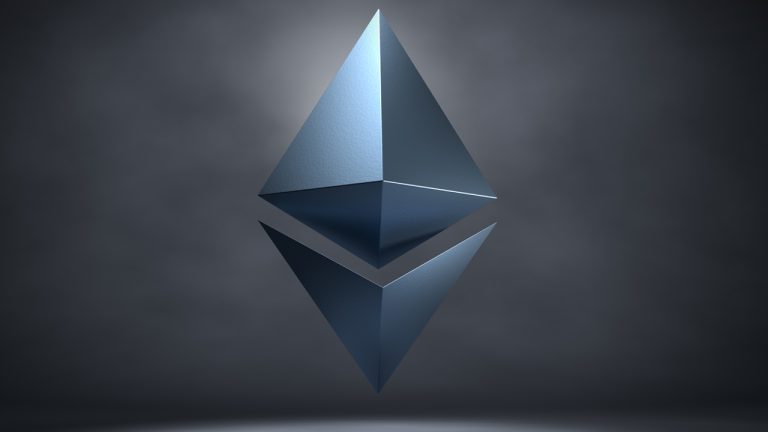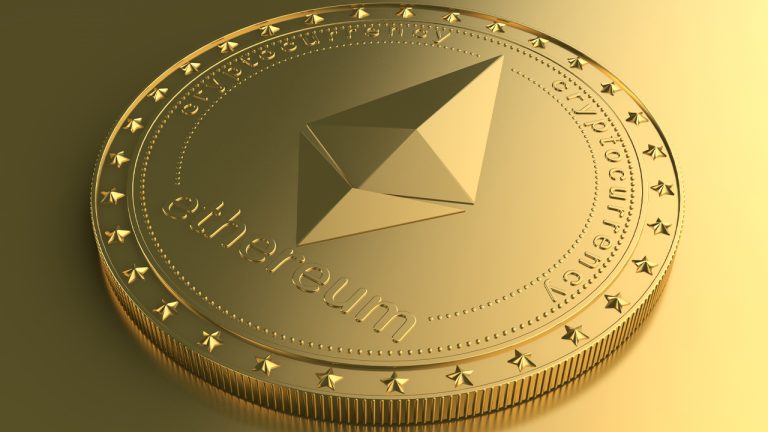 Ethereum network fees have experienced a significant upswing following the implementation of the Shapella upgrade on April 12th. In the last 30 days, onchain fees have soared by over 153%, from a prior rate of $4.65 per transfer to a current average of $11.80 per transaction. The data highlights a substantial surge in the costs […]
Ethereum network fees have experienced a significant upswing following the implementation of the Shapella upgrade on April 12th. In the last 30 days, onchain fees have soared by over 153%, from a prior rate of $4.65 per transfer to a current average of $11.80 per transaction. The data highlights a substantial surge in the costs […] Just over two weeks have passed since Ethereum’s Shapella upgrade on April 12, 2023, which occurred at block height 6,209,536, enabling stakers to withdraw for the first time. At the time of the upgrade, slightly over 8 million ethereum was locked into liquid staking protocols. Since then, over 400,000 ether, valued at $763 million, has […]
Just over two weeks have passed since Ethereum’s Shapella upgrade on April 12, 2023, which occurred at block height 6,209,536, enabling stakers to withdraw for the first time. At the time of the upgrade, slightly over 8 million ethereum was locked into liquid staking protocols. Since then, over 400,000 ether, valued at $763 million, has […]
Institutional investors accumulated Ether and sold off Bitcoin last week, suggesting confidence in Ethereum after the Shapella hard fork.
The price of Ethereum's Ether (ETH) token has retreated from its recovery trend versus Bitcoin (BTC) while making a series of lower highs in April.
As of April 24, the ETH/BTC pair was down about 5.5% from its local high of 0.0709 BTC six days ago. The same period witnessed Ether declining nearly 15% and Bitcoin dropping 11.25% in U.S. dollar terms.

For now, ETH holds above its 50-day exponential moving average (50-day EMA; the red wave) near 0.0672 BTC. But if the March 2023 fractal is any indication, Ethereum's price could drop sharply below the support wave.
The ETH/BTC pair saw a pullback trend in March after testing the 200-day EMA (the blue wave), breaking below its 50-day EMA in the process.
If the fractal plays out similarly in April, the downside target is 0.0627 BTC by the month's end, about 7% lower than the current levels, and a level that served as major support in March and April.
This target also coincides with Ether's long-term ascending trendline support — the "buy zone" in the chart below — that has been capping its bearish attempts since June 2022.

Interestingly, Ethereum's underperformance versus Bitcoin was counter to institutional flows for the past week.
Ethereum funds attracted $17 million to their coffers in the week ending April 21 versus Bitcoin's $53.1 million outflow, according to CoinShares' latest report.

"These inflows suggest there is increasing confidence amongst investors following the successful implementation of the Shapella upgrade," James Butterfill, head of research at CoinShares, noted, adding that they "were solely from Europe."
Related: Ethereum up 20% in April while Markets Pro sees 379% gain in one day
As for Bitcoin, the outflow began around April 14 when the coin reached $30,000, a psychological resistance level. Butterfill said the BTC's drop to below $27,500 resulted from profit-taking in the absence of macroeconomic triggers.
This article does not contain investment advice or recommendations. Every investment and trading move involves risk, and readers should conduct their own research when making a decision.

Ether stakers have withdrawn $1.21 billion worth of ETH from Ethereum staking contracts since the Shapella upgrade.
Ethereum's Ether (ETH) token has entered a sharp price recovery a week after hitting a six-month low versus Bitcoin (BTC).
On April 18, the widely-tracked ETH/BTC pair reached 0.0709 BTC, up about 15% from its local bottom of 0.0602 BTC six days ago. Now, the pair eyes a run-up toward 0.075 BTC by June, based on the fractal setup previously discussed here.

Interestingly, Ether's local bottom formation versus Bitcoin occurred on the day of Ethereum's long-awaited Shapella upgrade.
The hard fork enables Ether stakers to withdraw their rewards — around 1.1 billion ETH — from Ethereum's proof-of-stake smart contract. This update may have boosted ETH's appeal compared to BTC, beating anticipations that a freshly unlocked Ether supply would increase sell-pressure.
Stakers have withdrawn 574,700 ETH — worth about $1.21 billion — since the Shapella upgrade on April 12, according to data fetched by Nansen. Interestingly, Ether's price in U.S. dollar terms has increased by 14.25% in the same period.

It means that many stakers have decided to hold onto their Ether rewards. On the other hand, Bitcoin has failed to log a decisive breakout above its technical resistance of $30,000, possibly making ETH a more attractive short-term bet for traders.
Institutional investors have shown more interest in Bitcoin than Ether in the past week, according to CoinShares' weekly report.
For instance, Bitcoin-based investment vehicles witnessed $103.8 million in inflows in the week ending April 14. In comparison, Ethereum funds attracted $300,000 only, showing that mainstream investors may have followed the "sell the news" strategy after the Shapella upgrade.

Ethereum price meanwhile is also at risk of a possible bearish reversal move due to its overbought daily relative strength index (RSI).
Related: Shapella could bring institutional investors to Ethereum despite risks
If ETH price retreats from its current resistance level of around $2,140, its immediate downside target appears at around $1,984, which acted as resistance in May 2022 and August 2022.

An extended selloff could push Ether price down to its 50-day exponential moving average (50-day EMA; the red wave) near $1,800, down about 15% than its current price levels.
This article does not contain investment advice or recommendations. Every investment and trading move involves risk, and readers should conduct their own research when making a decision.
 In crypto news this week, the Ethereum network’s long awaited Shapella upgrade took effect, unlocking staked ether. In the broader financial world, economist Harry Dent has predicted a massive crash to hit by mid-June, bank lending plummeted by a record $105 billion in two weeks, and the USD’s ability to maintain its value even in […]
In crypto news this week, the Ethereum network’s long awaited Shapella upgrade took effect, unlocking staked ether. In the broader financial world, economist Harry Dent has predicted a massive crash to hit by mid-June, bank lending plummeted by a record $105 billion in two weeks, and the USD’s ability to maintain its value even in […] On Wednesday, April 12, 2023, at 6:30 p.m. Eastern Time, Ethereum’s Shapella upgrade was successfully implemented, enabling validators to withdraw staked ether. Data reveals that more than 860,000 ether is poised for unlocking, and 77,000 ether is expected to be withdrawn on Thursday. Ether’s price has experienced a surge, rising 6% against the U.S. dollar […]
On Wednesday, April 12, 2023, at 6:30 p.m. Eastern Time, Ethereum’s Shapella upgrade was successfully implemented, enabling validators to withdraw staked ether. Data reveals that more than 860,000 ether is poised for unlocking, and 77,000 ether is expected to be withdrawn on Thursday. Ether’s price has experienced a surge, rising 6% against the U.S. dollar […]
More than $325 million worth of Ethereum (ETH) could hit the open market in the wake of the project’s recent Shapella upgrade, according to the crypto analytics firm Glassnode. In a new blog post, Glassnode analyst Alice Kohn examines different staking cohorts in an attempt to estimate the amount of ETH that will be sold […]
The post Over $300,000,000 in Ethereum To Hit Market After Upgrade, Says Glassnode – Here’s What Could Happen to ETH’s Price appeared first on The Daily Hodl.

Galaxy Digital founder and CEO Mike Novogratz is predicting that a US economic slowdown will benefit the two leading crypto assets. In a new CNBC interview, Novogratz says that the crypto rally is due to rising adoption and a belief that the tightening of monetary policy is over or close to an end. According to […]
The post Billionaire Mike Novogratz Predicts Imminent US Credit Crunch, Says Outcome Will Boost Crypto With Ethereum In for ‘Big Win’ appeared first on The Daily Hodl.

Shapella will take effect at epoch 194,048, which is scheduled for 10:27:35pm UTC on April 12.
Ethereum validators will soon be able to withdraw their Ether (ETH) from the Beacon Chain, with the Shapella hard fork set to be activated on the Ethereum mainnet on April 12.
Shapella will take effect at epoch 194,048, which is scheduled for 10:27 pm UTC on April 12, Ethereum core developers confirmed.
The withdrawals will be enabled by Ethereum Improvement Proposal EIP-4895 by “pushing” staked Ether from the Beacon Chain to the Ethereum Virtual Machine (EVM), otherwise known as the execution layer.
It's happening
— timbeiko.eth ☀️ (@TimBeiko) March 28, 2023
Shapella is scheduled on mainnet for epoch 194048, scheduled for 22:27:35 UTC on Apr. 12, 2023
Client releases compatible with the upgrade are listed in the announcement below https://t.co/I0hSv9lnjz
The epoch, slot, and time were confirmed following a week-long deliberation between members of the Ethereum Foundation, which was led by Ethereum core developer Tim Beiko.

While the hard fork will allow for partial and full withdrawals, several mechanisms are set in place to ensure a flood of Ether supply doesn’t disrupt the market.
There are now 17.81 million Ether staked on the Beacon Chain. At a current price of $1,776, which means $31.6 billion can be incrementally unlocked over time.

While the Ethereum Foundation described the last testnet run on Goerli as “smooth,” there was a notable delay in activation time due to many validators not updating their client software.
However, Beiko is confident it won’t be an issue this time, as Ethereum validators will be economically incentivized to make the update for the Mainnet.
Because of EIP-4895, Shapella is considered the most significant hard fork on Ethereum since Paris (The Merge) changed the network consensus mechanism from proof-of-work to proof-of-stake on Sept 15.
Prior to that, London introduced EIP-1559 in August, 2021, which introduced a base fee that users must pay instead of the old price auction method. While the validators still receive a block reward and tip, the base fee is burned, which is intended to make Ether deflationary over time.
Related: Ethereum’s Shapella transition is “on the horizon”
Berlin optimized gas costs for some EVM actions in April 2021, while Beacon Chain Genesis marked the first block that was produced on the proof-of-stake chain on Dec. 1, 2020.
Finally in December 2019, Istanbul served to improve denial-of-service attack resilience and make layer-2 scaling solutions based on SNARKs and STARKs more performant.
If you want to watch as the upgrade happens, you can join @ethStaker, @EthCatHerders, myself and others during the Shapella watch party here https://t.co/ZHWQfMemZc
— timbeiko.eth ☀️ (@TimBeiko) March 28, 2023
The Ethereum Foundation also announced last week that it doubled rewards for any bugs found in the Shapella code. Successful bounties may receive a reward anywhere between $2,000 and $250,000, depending on how “critical” the bug is.
 During the Execution Layer Meeting streamed on March 16, 2023, Ethereum developers announced that the blockchain is scheduled to upgrade on April 12, in 27 days. The upgrade, known as the Shanghai-Capella upgrade or Shapella, will include the implementation of Beacon chain push withdrawals. This will enable Ethereum network validators to support withdrawal operations following […]
During the Execution Layer Meeting streamed on March 16, 2023, Ethereum developers announced that the blockchain is scheduled to upgrade on April 12, in 27 days. The upgrade, known as the Shanghai-Capella upgrade or Shapella, will include the implementation of Beacon chain push withdrawals. This will enable Ethereum network validators to support withdrawal operations following […]